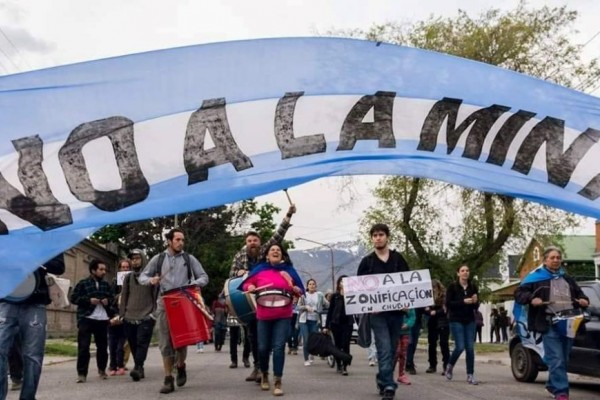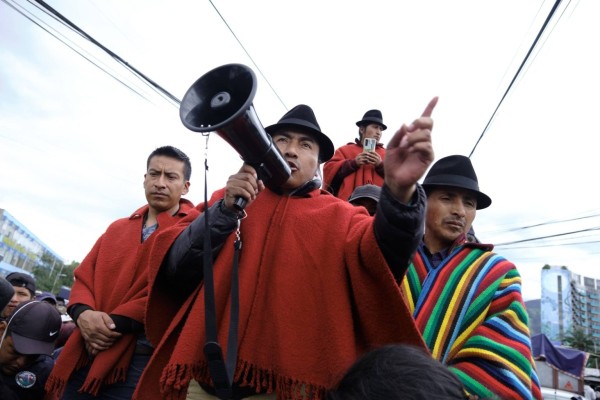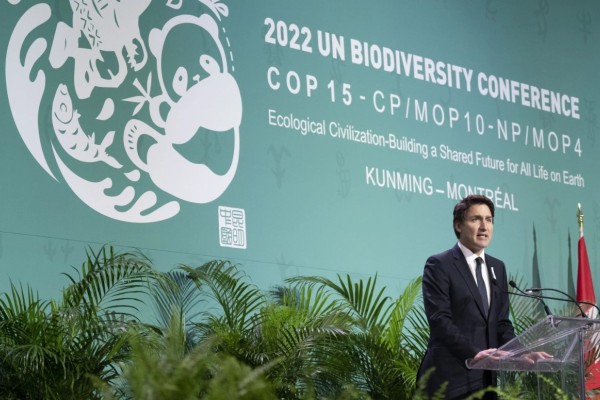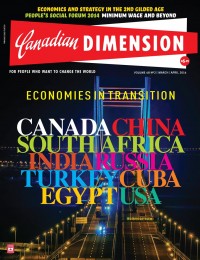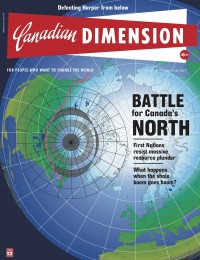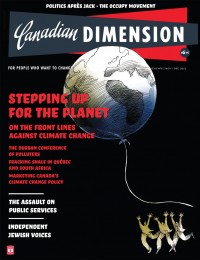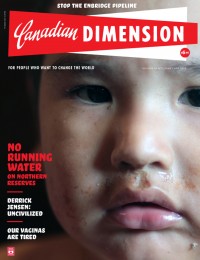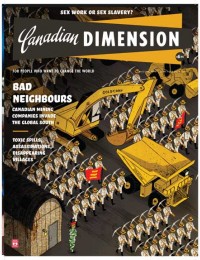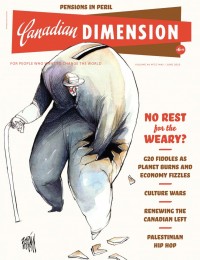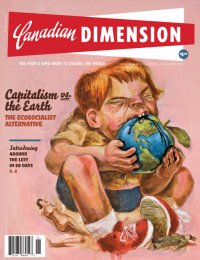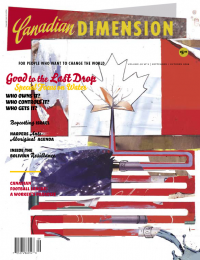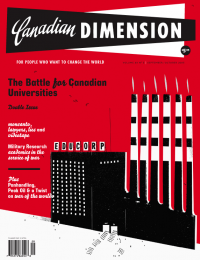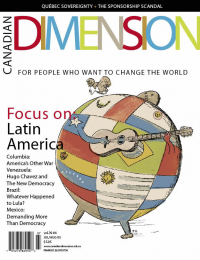Indigenous resistance challenges Ontario’s ‘mining boom’
Ring of Fire has become one of the most active regions in the world for lithium exploration
_800_515_90.jpg)
The Ring of Fire is located in northwestern Ontario. Many First Nations along the James Bay coast, pictured here, are located downstream of the development. Photo courtesy the Government of Ontario/Flickr.
As Canada’s governments hungrily scour domestic and foreign territory in search of critical minerals—an essential part of Ottawa’s new Cold War on China—Ontario Premier Doug Ford is attempting to spin demand into a provincial mining boom.
Ontario’s first-ever Critical Minerals Strategy (CMS), announced alongside a federal initiative of the same name, proclaims that the province is “incredibly fortunate” and “blessed with exquisite deposits of nickel, lithium, platinum, cobalt and dozens of other strategically important raw materials.”
Ford’s economic policies are catering to mining companies that yearn for unfettered access to these resource supplies, even as Indigenous communities organize to resist the extractivist bonanza.
The geopolitical significance of Ontario minerals
The Ontario CMS acknowledges the “geopolitical significance” of the province’s minerals:
Many of these minerals [labelled ‘critical’ by the Canadian government] have been identified… as having geopolitical significance due to supply shortages or concentration of supply in very few countries. Global conflict has exacerbated these supply vulnerabilities… Over-reliance on a select few countries for critical minerals supply, processing and refining has historically led to supply chain disruptions, particularly when export limits are imposed or when geopolitical instability threatens supply.
Governments in the Global North are particularly concerned by two things: China’s dominance of the minerals and technologies needed to produce “green” tech, and concentration of some critical minerals in historically underdeveloped countries which seek to use soaring global demand as a way to develop their own economies.
Recent events in Indonesia shine a light on the tensions inherent in the latter point. There, the administration of President Joko Widodo is trying to increase the country’s domestic manufacturing capabilities, a move that would allow Jakarta to exercise more control over how its natural resources are developed and used.
A key factor is “localization”: the Indonesian government wants foreign mining companies to invest not only in extractive enterprises, but also smelting plants, which will employ thousands of locals and generate new revenues for the government. As part of this strategy, Jakarta has banned exports of raw nickel, identified as another critical mineral by the West. Notably, the US and the EU are attempting to pressure Jakarta to reverse its localization efforts through the World Trade Organization (WTO), while China has accepted these policies and spent billions developing smelting plants in Indonesia.
Ottawa and Canadian companies dislike governments in the Global South that impose limits on foreign investments in the name of domestic development. Their aversion has only become more obvious as the geopolitical significance of critical minerals grows. This is why, for instance, the Canadian government is currently battling Mexico’s popular AMLO government over nationalist reforms that will increase the state’s role in the country’s strategically important mining sector. It is also why the unelected Boluarte government in Peru has retained ardent Canadian support: while Mexico is placing limits on Canadian mining companies, Peru’s Boluarte is a staunch neoliberal, her policies catering to transnational mining investors at the expense of domestic development.
Undergirding all of these conflicts is the new Cold War on China, which has seen Canadian officials announce plans to “delink” from China and build a “Western supply chain” of critical minerals. The endpoint of this delinking, it would seem, is military confrontation.
In the context of this global anti-China agenda, Ottawa expects Global South nations to accommodate Canadian demands. When they don’t, as in Mexico, conflict arises. Resource nationalism (governments placing limits on foreign investors as part of domestic development strategies) is an ever-present risk for Canada’s access to geopolitically significant critical minerals. This is one reason why the exploitation of Ontario’s mineral supply is such a priority for Prime Minister Trudeau and Premier Ford, regardless of the resistance of the Indigenous communities who will be most affected by the extraction process.
The lure of lithium
Ontario’s northwest has become one of the most active regions in the world for lithium exploration, a mineral required to produce electric vehicles and other technologies that don’t rely on oil and gas. As most of the world’s lithium reserves reside outside the Global North, Canadian governments are eagerly expediting the exploitation of domestic supplies in Ontario and elsewhere.
The number of companies inking exploration deals throughout northern Ontario is staggering. It includes Avalon Advanced Materials, Frontier Lithium, Rock Tech Lithium, Imagine Lithium, Spod Lithium, Green Technology Metals, Battery Age Minerals, Rock Edge Resources, Weekapaug Lithium, Critical Resources, Zimtu Capital, International Lithium, Lion Rock Resources, Beyond Lithium, Lithium One, and First Lithium Minerals.
Over the past few years, mining companies have undertaken thousands of exploration projects on lands belonging to four First Nations: Grassy Narrows, Wapekeka, Neskantaga and Big Trout Lake. In July of this year, these four nations formed an alliance to “defend their lands and waters” from the frenzy of mining exploration promoted by the federal and provincial governments.
Despite a supposed focus on “reconciliation,” the Ontario government is acting with callous disregard for Indigenous communities within its borders. When companies use the province’s online mining system to stake an exploration claim, the system doesn’t even inform them if their chosen land is part of a First Nation’s territory. Nations have also accused the provincial government of granting mining permits without consulting them—a violation of Canadian law, as consultation is required under the constitution and the Ontario Mining Act.
While protesting in front of the Ontario legislature this month, representatives of several First Nations said they haven’t been consulted by the provincial government as lithium miners swarm their territories. Neskantaga Chief Chris Moonias said, “There hasn’t been any consultation at all and here’s Ontario saying they have legally consulted the community during the pandemic when we couldn’t even meet during the pandemic, we had our community lockdown.” Meanwhile, Grassy Narrows Chief Rudy Turtle told the provincial government, “We just don’t want mining in our lands… You are going around looking for land without even talking to us… we are against that.”
When it comes to mining, it seems clear that Canada’s new Cold War on China is taking precedence over “reconciliation.”
Nestkantaga First Nation Chief Chris Moonias speaks at a rally against the Ring of Fire in front of the Ministry of Energy, Northern Development and Mines in Toronto, July 20, 2023. Photo by Jessica Smith Cross/The Trillium.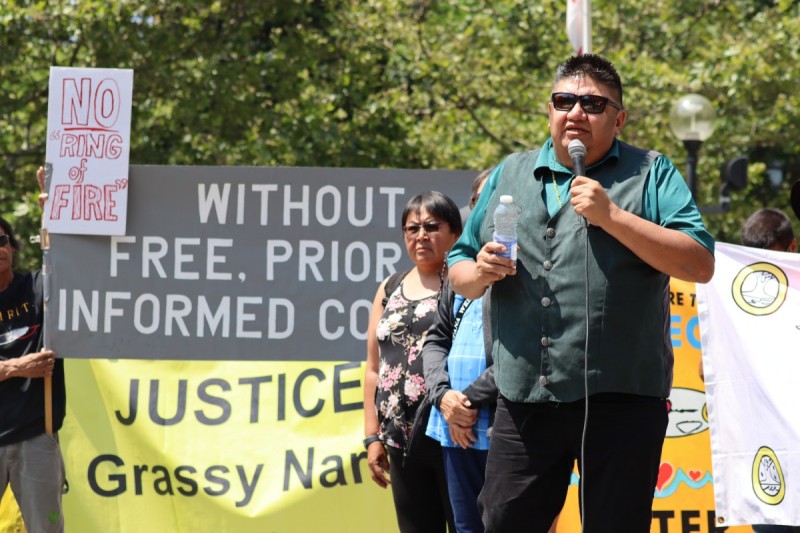
Resisting Ford’s “legislative bulldozer”
Earlier this year, the Ford government amended the Ontario Mining Act with Bill 71, the Building More Mines Act. The aim of these amendments is to “reduce provincial permitting and approval times to put more new mines into production quicker to meet… demand for high-tech, or critical, minerals, such as nickel, copper, palladium and lithium, among others.”
Once more, numerous Indigenous communities said they weren’t consulted on the amendments. The Matawa Chiefs Council—which consists of the communities of Aroland, Constance Lake, Eabametoong, Ginoogaming, Long Lake #58, Marten Falls, Neskantaga, Nibinamik and Webequie—issued a statement in which they said they had simply been “informed” of the amendments, not “consulted.” They accused the Ford government of running a “legislative bulldozer” through their lands with the goal of increasing the province’s mineral production.
A central focus of the Ford government is exploiting the “Ring of Fire” region in the northern James Bay Lowlands, despite the resistance of Indigenous nations there. These nations assert that the provincial government has failed in its consultation duties, and that its drive to exploit the area’s minerals is endangering the region’s peatlands, which act as ecologically crucial carbon sinks, in the name of transitioning away from environmentally harmful energy.
The Ring of Fire has become a key part of Canada’s efforts to delink its mineral supply chains from China. As Divya Rajagopal writes, “[The Ring of Fire] is considered the next frontier in the exploration of critical minerals such as copper, cobalt [and] nickel as Canada seeks to diminish its reliance on China for metals seen as crucial in the transition to a greener economy.” According to Financial Post journalist Naimul Karim:
The development of the Ring of Fire region is a component of Canada’s plan to build a new electric vehicle battery industry. Currently, the processing of battery minerals is controlled by China. Canada, along with the United States, has taken a number of steps in the last year to lessen its dependence on the Asian country for battery materials.
The Ring of Fire project has stalled due to continued opposition by the Indigenous nations who will be most impacted by its development. Their resistance is admirably fierce, as Isaac Phan Nay outlines:
In March [2023], at a Toronto event known as the ‘Super Bowl’ of the global mining industry, Neskantaga Chief Wayne Moonias said companies would ‘have to kill us’ before crossing the Attawapiskat River without consent. Later that month, Chief Moonias and members of four other nations shouted down Premier Ford at the legislature.
Federal Environment Minister Steven Guilbeault has said, “For any development to happen in the Ring of Fire, Indigenous nations will need to be part of the discussion in decision making process.” This is true, but at the same time, his statement elides the more substantive demands of northern Ontario First Nations for self-government, and legal recognition of their right to control their traditional territories as they see fit.
The problem here isn’t some ambiguous “lack of dialogue”—it is conflicting notions of what Indigenous governance in Canada can and should look like. As it stands, Canada’s federal and provincial critical mineral strategies pay lip service to reconciliation and the right to prior informed consultation, but on the ground, the reality is very different.
Ontario mining and “weaponized detachment”
Western economies are deeply entwined with China. In a surprisingly lucid piece in Foreign Affairs, Ali Wyne argues that the interdependence of these large economies can serve as a preventive for war. “Paring back connectivity with China,” as Canada and the US are doing, risks descending into what Henry Farrell and Abraham Newman call weaponized detachment, “in which greater economic independence emboldens states to act more aggressively.”
“In other words,” writes Wyne, “Beijing and Moscow could become less fearful of contesting Western influence and more likely to deepen their partnership, especially if they are able to bolster ties with nonaligned powers and countries across the developing world.” The opposite is also true: the more Canada and the US detach from the Chinese economy, the less incentive they will have to maintain positive relations with China, leading to an even greater rise in conflict and tension. The innately geopolitical nature of Canada’s Critical Minerals Strategy increases the risk of weaponized detachment, especially given the fact that Canadian troop deployments and participation in Pacific military exercises have been increasing in recent years.
Like mining projects across Canada, lithium exploration in Ontario and the development of the Ring of Fire have both a domestic and international dimension. Domestically, they seek to promote Canadian extraction of the minerals needed to enact widespread changes to Canada’s energy sector, without fundamentally altering the relationship between mining companies, the colonial state, and Indigenous nations. Internationally, these projects are directed against Beijing. They seek to reduce the Canadian economy’s reliance on Chinese minerals and tech, giving Canada more economic flexibility as it joins the US in confronting China in the Pacific.
In the context of the Canadian military’s growing presence in the Pacific and Ottawa’s belligerent naval transits near China’s coastline, it appears that the endgame of Canada’s plan to delink from China is a military confrontation of some kind. When understood this way, the Indigenous water and land defenders in Ontario (and around Canada) are not only on the frontlines of challenging the colonial state’s legal and extractive apparatus; they are also at the forefront of challenging Ottawa’s militaristic policies abroad.
For all these reasons, Indigenous resistance to Trudeau and Ford’s ‘mining boom’ in Ontario deserves the support of every Canadian who values social and economic justice, global peace, and the ecological integrity of the lands we inhabit.
Owen Schalk is a writer from Manitoba. His book on Canada’s role in the war in Afghanistan will be released by Lorimer in September. You can preorder it here. To see more of his work, visit www.owenschalk.com.






